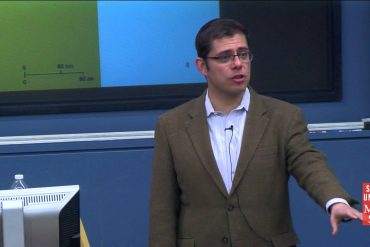1) Haviv Rettig Gur looks at ‘How a tiny reform radicalized Israeli politics’ at the Times of Israel.
“Political scientists and other experts assured Israelis that the threshold reform would reduce the number of factions, stabilize the political system, moderate the political margins and increase the effectiveness of Israeli governments and legislators. In practice, it has done the opposite. It empowered the radicals and made compromise all but impossible.
It turns out the old messiness that so offended political scientists and reformists was, in the clarity of hindsight, one of the great strengths of the Israeli political system, granting it the flexibility, stability and moderation now lost in the fallout of the threshold reform.”
2) At the Alma Center, Yaakov Lappin discusses ‘Hamas’s Role in Iran’s Grand Strategy of Multi-front Attack on Israel’.
“Hamas’s long-term objectives of expanding beyond the Gaza Strip and taking over the West Bank are often discussed, but Hamas’s role in Iran’s grand strategic vision, of building a multi-front threat of firepower against the Jewish state, receives less attention.
It is well established at this stage that Hamas has no intention of making do with its control of Gaza, which it rules with an iron fist, but to also dominate the West Bank and wrest control away from its internal Palestinian rival, Fatah, and to become the new leader of Palestinians in Ramallah and Jenin, not just in the Strip.”
3) At the INSS, Udi Dekel gives his view of the recently emerged ‘Lion’s Den’ terrorist group.
“Most of the shooting incidents in the West Bank in recent weeks are attributed to this group, which is the main element responsible for the escalating terror in the area. September saw more than 34 shooting incidents in the West Bank – the highest number for over a decade – and they included firing from afar at settlements, shooting at vehicles on the roads, shooting at IDF positions and bases, and above all, live fire clashes with IDF forces operating in Palestinian cities and villages. Most of the organization’s activity is concentrated in the West Bank, although in at least one case a link was found with a terrorist who reached Jaffa, armed with an improvised weapon and explosive devices, and thanks to luck and alertness, was captured by the security forces before he could execute his plan.”
4) Ely Karmon of the ITC puts ‘Iran’s Strategy of Terrorist Blackmail in a Historic Perspective’.
“This article argues that the Iranian regime successfully uses a terrorist blackmail strategy since the 1979 hostage saga of American diplomats at the US Tehran embassy, the bombings against the US Marines and French paratroopers of the Multinational Peace Force in Beirut in 1983, the kidnapping of dozens of Western academics, businessmen and diplomats in Lebanon in the 1980 – 90s and a long list of similar worldwide terrorist events during the years. Only rarely have the Iranian leaders been deterred, when their leaders felt that there was a direct threat to them, like by the Mykonos trial in Germany in 1997, or Iran’s territory was in danger, as after 9/11 or the U.S. occupation of Iraq in 2003.
The author analyses the Western powers’ policy during these crises, the waves of Iranian and its proxy Hezbollah attacks in the 1980s, 1990s and the 2000s and focuses on several case studies, such as France, Germany, Argentina, Thailand, India and Turkey. It also criticizes the policies of the involved governments and the lack of effective responses to Iran’s “blackmail terrorist strategy” and “hostage diplomacy” in the past and until recently.”





